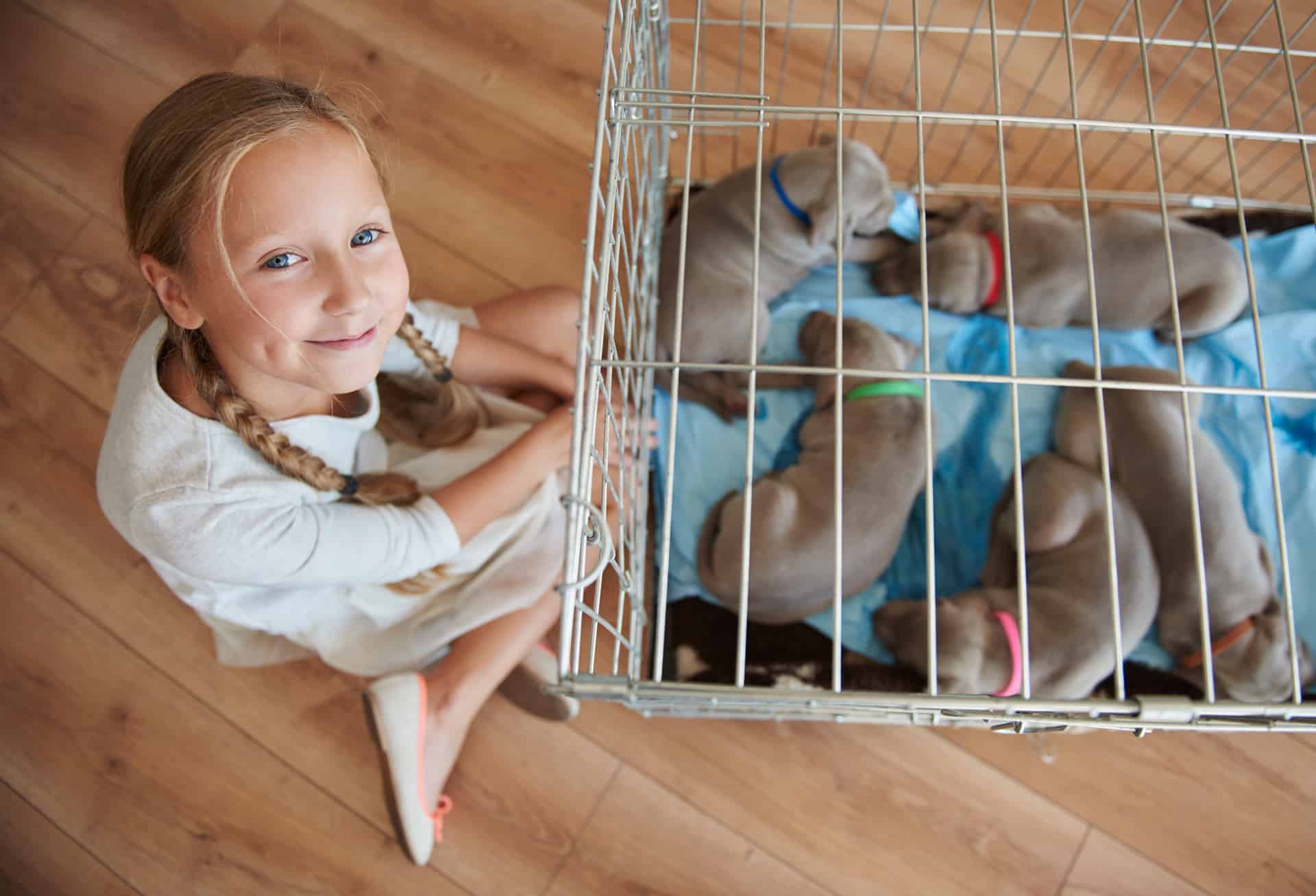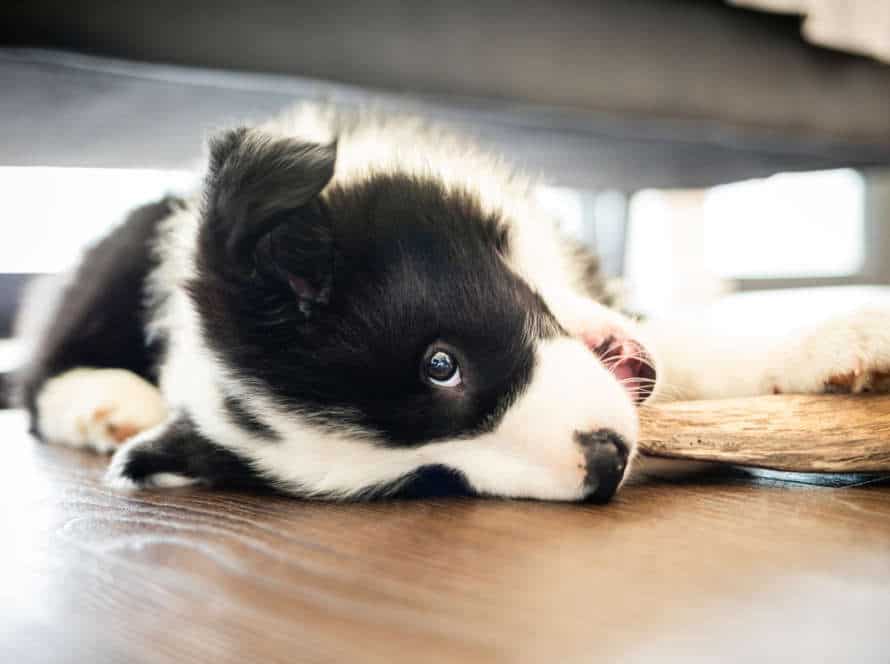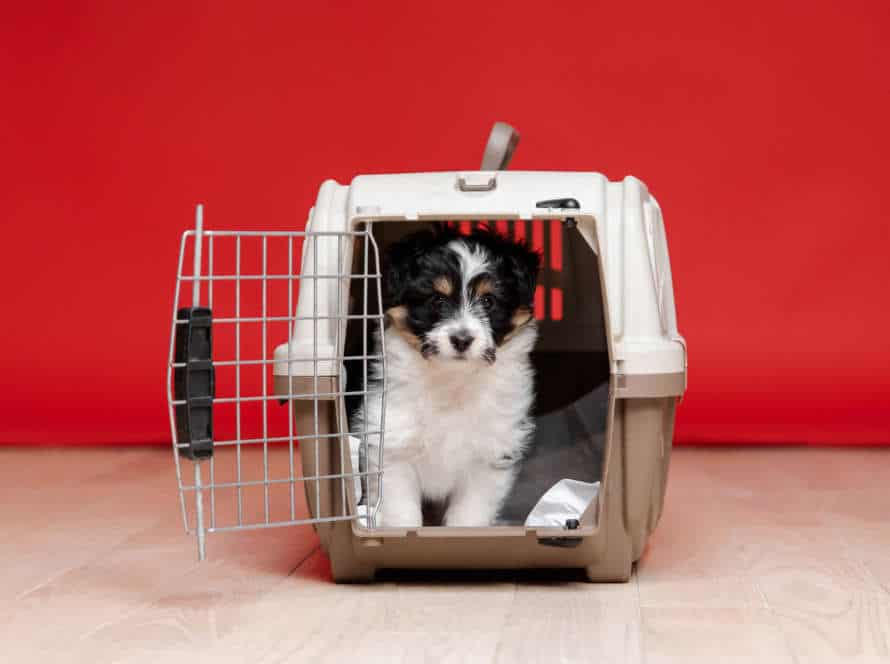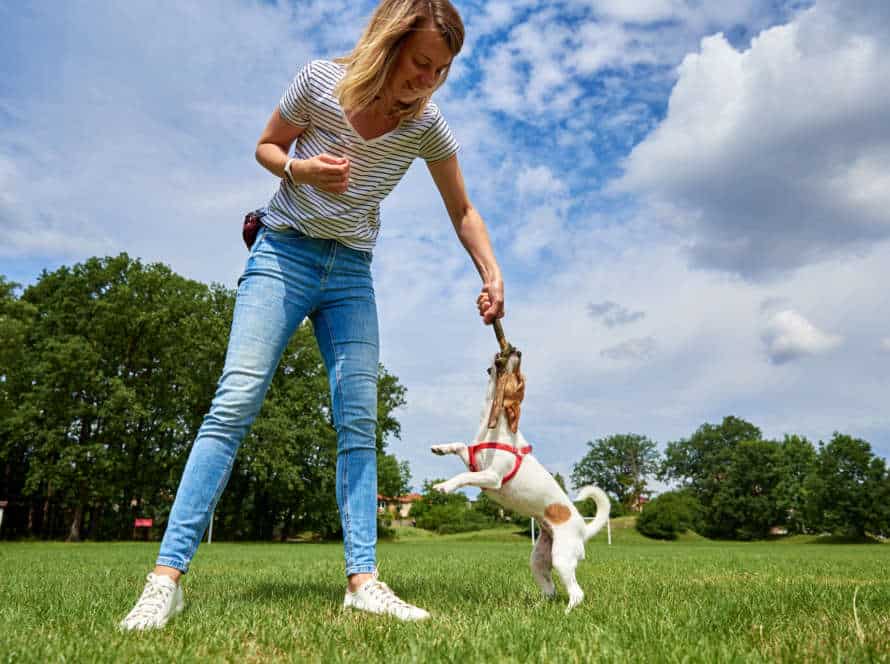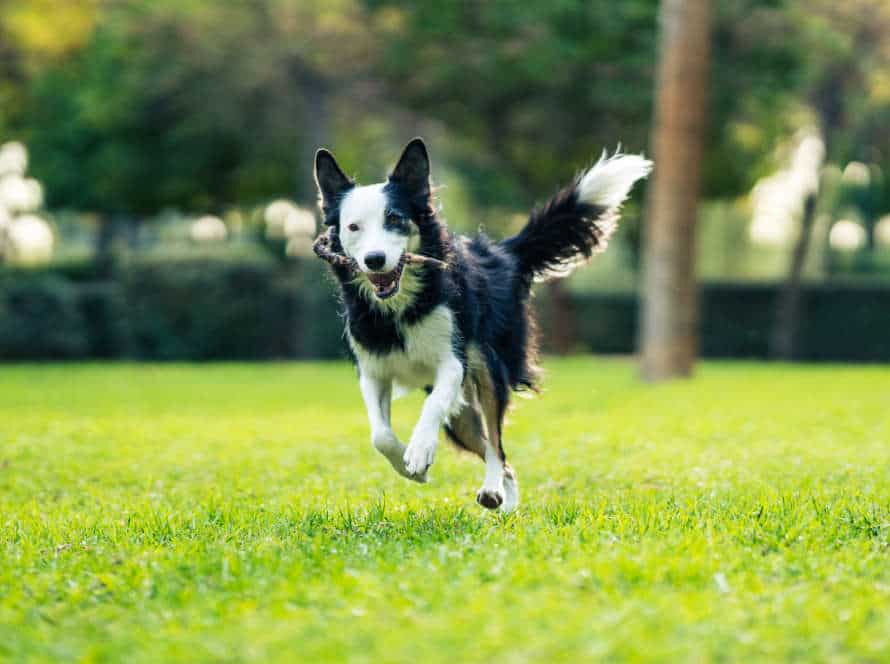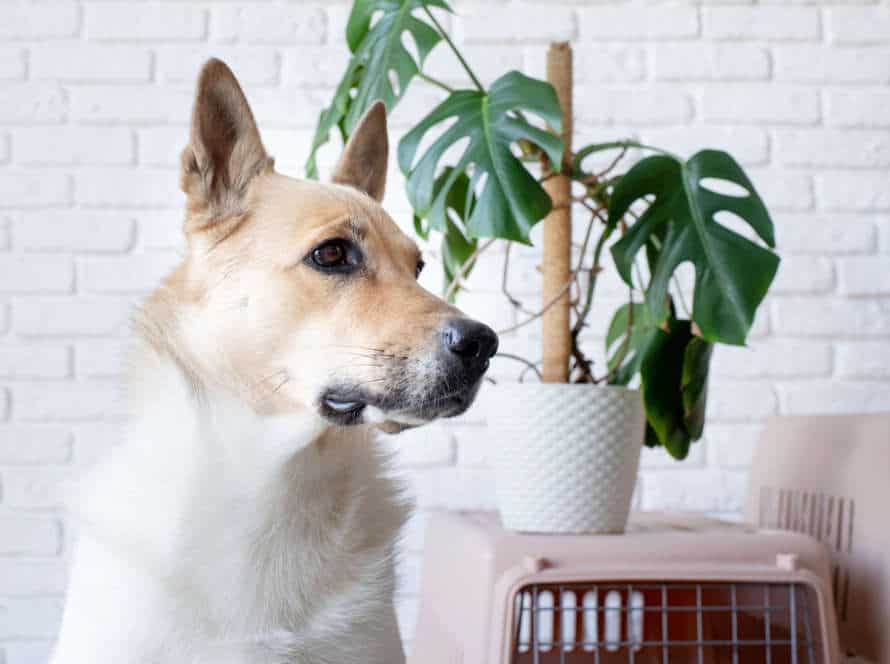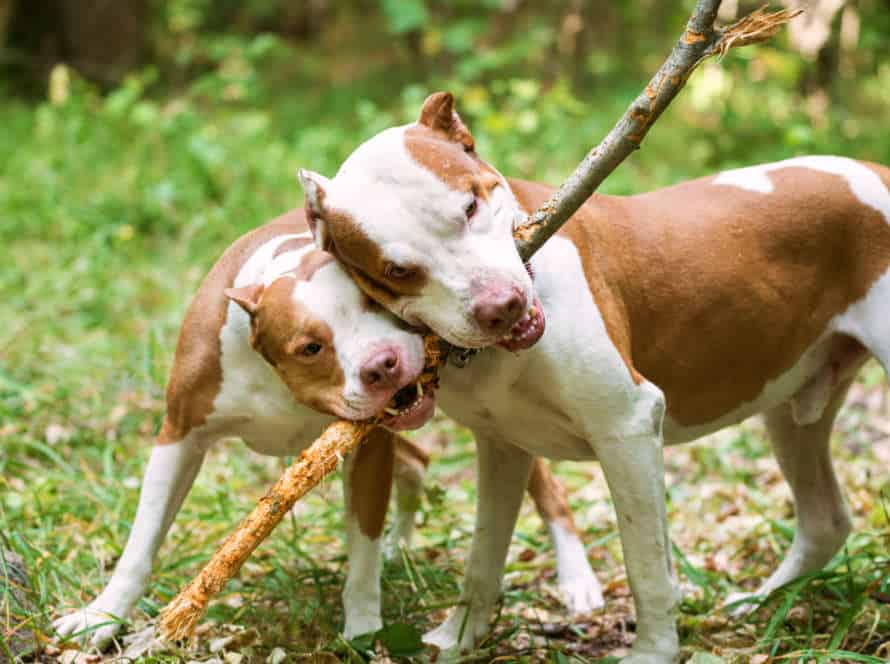Escaping the Crate: Preventing Breakouts and Ensuring Safety
Escape success? Follow these tips!
- Crate size: Big enough for standing, turning and lying comfortably. Not too big, or it could become a bathroom-bed combo.
- Secure it: Stable surface, no wobbling. Secure it for extra safety.
- Cozy bedding: Soft beds and blankets make it inviting.
- No punishment: Keep it a happy, safe place.
- Gradual increase: Start short, go longer. Helps your dog get comfortable and avoid stress.
Understanding the Risks of Crate Escapes
Crates make pets safe, but risks exist. Crate escapes can be dangerous. To avoid them, it’s essential to know the risks. This way, you make sure everyone is secure.
Why Dogs Escape from Crates
Dogs may abscond from crates for various reasons. These include anxiety, discomfort, curiosity, or no training. A runaway pup can put itself in jeopardy and harm its environment, resulting in costly repairs.
Here are some escape risks and prevention tips:
- Ingesting harmful items: A stray dog may chew hazardous stuff, resulting in poisoning or obstruction. Make sure the crate is safe and clear the area around it.
- Roaming the house: An escaped pup can cause chaos and ruin your furniture or belongings. Select a crate designed for your dog, letting it move while confined.
- Agitating neighbors: An escaping dog can disrupt peace in the area, potentially leading to noise complaints or legal action.
Provide your dog with exercise, mental stimulation, and social contact. Training and socialization can make it more comfortable and reduce the chances of escaping.
Risks Associated with Crate Escapes
Crate escapes can be dangerous for doggies! It is key to understand these risks to prevent a bad situation, and keep your pup safe.
Some of the risks include:
- Injury: If a dog tries to escape their crate, the force used can hurt their paws, nose, or teeth.
- Anxiety & Behavioral Issues: If they escape, they may get more anxious, aggressive, or other behavioral issues, hard to treat.
- Property Damage: Crate escapes can damage your home or other property, resulting in costly repairs.
To avert crate escapes, select the right type & size of crate. Introduce your dog to it gradually, make it a comfy & safe spot, & give them enough exercise & mental stimulation to reduce anxiety & restlessness.
Remember, a simple escape can have bad effects, so take preventive measures seriously.
Consequences of a Crate Escape
If your pup is likely to escape their crate, it can be very dangerous for them. Here are some possible repercussions:
- Injuries: They may hurt themselves trying to break free, by biting, clawing, or cutting themselves on the crate’s sharp edges or wires.
- Property Damage: Escaping pups can nibble or scrape furniture, walls, windows, and even the crate.
- Aggression: Dogs escaping their crate can get aggressive to people, animals, and things around them due to fear, anxiety, or other strong feelings. This can lead to others being hurt and your pup being punished by law.
To avoid these issues, secure locks, sturdy crates, and engaging toys can help stop any escape attempts.
Preparing a Secure Crate
Prepping a secure pet crate is the optimal way to protect your furry friend and prevent any possible breakouts. Ensure the crate is completely secure and impossible to escape from. No matter how strong your pet is, they won’t be able to escape. This section will provide tips on how to properly prepare the crate and guarantee the safety of your pet.
Proper Crate Size and Installation
Choosing the perfect crate size and installation is essential for a safe crate for your pet and to prevent escape. Here are some tips to help you get started:
Measuring the crate size:
- Measure your pet’s height, length and width.
- Add a few inches to their measurements for them to stand, turn and lie comfortably.
- Choose a crate size based on the pet’s measurements, not breed standards.
Installing the crate:
- Pick a quiet and cosy spot in your home for the crate.
- Make sure it’s secure and won’t wobble or fall.
- Put comfortable bedding inside.
- Ensure it’s big enough for a bowl of water and toys.
Pro Tip: Keep an eye on your pet while crate training to ensure safety and wellbeing.
Selecting the Right Crate Materials
Picking the right materials for a crate is vital to guarantee the safety and security of your pet. With numerous options in the market, it is essential to pick the most suitable materials based on your pet’s behavior and the level of security needed.
Here are some materials to think about:
- Metal: Metal crates are long-lasting and durable. Great for dogs that chew or scratch. Make sure the metal is non-toxic and there are no sharp edges that can hurt your pet.
- Plastic: Lightweight and with good ventilation and visibility. Suitable for travel, but can crack if your pet chews or scratches them.
- Wood: Wooden crates look good, provide insulation, but require regular maintenance. Not for pets that chew or scratch excessively.
- Fabric or Mesh: Lightweight, foldable and good for travel. Not recommended for pets that are destructive or escape artists.
Remember to get a crate large enough for your pet to stand, sit, turn around and lie down. Also, make sure the crate has secure locking mechanisms and a comfy bed or mat inside.
Reinforcing the Crate for Added Security
When transporting pets, having a secure crate is crucial for their safety. To take it up a notch, reinforcing the crate can provide an extra layer of protection, avoiding breakouts and keeping your pet safe during transit. Here’s how:
- Zip ties at the corners of the crate can prevent it from collapsing.
- Cover all air vents with wire mesh to make it hard for your pet to chew through them.
- Go for metal hardware instead of plastic to secure the door and stop breakouts.
- Attach a strong lock on the door to make sure it stays shut.
By reinforcing the crate, you can rest assured that your pet will arrive at their destination safely.
Preventing Breakouts in Crates
Crates are a great way to keep pets safe. But, they can also cause stress. To make sure your pet is secure and comfy, it’s essential to know how to set up, use and reinforce the crates. Here’s a few tips to prevent escapes:
Creating a Positive Crate Training Experience
Crate training is great for housebreaking puppies and keeping them safe. But, it can go wrong and cause breakouts or injuries. Here are some tips for successful crate training and avoiding breakouts:
- Get the right sized crate for your puppy’s size and breed.
- Gradually introduce your puppy to the crate and make sure he links it with good things – like feeding and playing.
- Give your pet comfy bedding and toys in the crate so it’s enjoyable.
- Don’t leave your puppy in the crate for too long. Make sure he gets enough exercise and potty breaks.
- Check the crate regularly for signs of wear and tear. A weakened or damaged crate can cause breakouts and injuries.
Follow these tips and your puppy will have a positive and safe crate training experience.
Pro tip: Supervise your pup when he’s in the crate, especially in the first few weeks.
Identifying and Addressing Separation Anxiety
Separation anxiety is a common issue for dogs. It can lead to them breaking out of crates and causing harm to themselves. Identifying and tackling it is vital. Here are some signs of it:
- Excessive barking, howling or whining when left alone.
- Destructive behaviour like chewing or digging.
- Refusal to eat or drink when alone.
- Attempts to escape while left alone.
To address anxiety, you can:
- Introduce gradual desensitization – start with short periods of leaving them alone and increase time gradually.
- Create a safe and comfortable environment – like a crate or a designated area.
- Do pre-departure routines to calm them down.
- Hire a dog sitter for extended periods or doggy daycare.
- Get help from a professional dog trainer or behaviourist.
Pro tip: Addressing anxiety takes patience and dedication. Start small, be consistent and reward good behaviour to help your pup overcome their anxiety.
Providing Adequate Exercise and Mental Stimulation
Exercise & mental stimulation are important for crate safety. Set aside 30 minutes a day for outdoor activity & playtime. Interactive toys & obedience training will help keep your pup from boredom-induced breakout attempts.
Choose crate size based on breed & age. Provide bedding & toys to create a positive association. Never use the crate as punishment. Gradually increase time spent in the crate.
Pro tip: If breakouts continue, consult a professional dog trainer.
Ensuring Safety During Crate Time
Crate time is ideal for keeping your pup safe and away from danger. To guarantee their safety, make sure they can’t break free. Here are some helpful strategies and tips to make crate time safe:
- Use suitable materials
- Ensure the space is well ventilated
Removing Potential Hazards from the Crate and Surrounding Area
Safety comes first when crate training your pup. To keep them safe, remove any sharp objects and potential hazards from the crate and area. Cover electrical cords and wires. Block off any dangerous places. Make sure the crate is the right size for your dog and use a cover or blanket to make them feel safe. By doing all this, you and Fido will be comfortable during crate time. Pro Tip: Always watch your pup and don’t leave them in the crate for too long.
Monitoring Your Dog While in the Crate
Crate training your pup is a great way to get them comfy in a contained space. But, it’s essential to monitor their behavior while in the crate. Here are some tips to ensure their safety:
- Pick the right size crate. Not too big, not too small.
- Examine the crate for any sharp edges or dangerous items before placing them in.
- Don’t leave your dog in the crate for long. Provide enough food, water, and exercise.
- Watch your pup while they are in the crate to make sure they are not distressed.
- Find a safe, quiet place with no noises or activities. This will help guarantee your pup is secure and healthy.
Following these tips will help make sure your pup is safe and comfy in the crate – allowing you to relax knowing they are secure.
Using Crate Accessories to Promote Safety and Comfort
Crate accessories can make crate time comfy and safe for your pet pal. There are many tools that aid in preventing breakouts and keeping them safe. These include:
- Crate Locks, which secure the door
- Floor Mats that provide a soft surface
- Crate Covers to create a private space
- Crate Fans to keep it cool
- and Bolt-On Bowls to stop spills
To make the crate welcoming and relaxed, put in a comfy bed, blankets, and toys. Using these accessories will make the crate time safe and comfortable for your furry friend!
Alternative Solutions to Crating
Creating a crate for your pet can be tough. So, pet owners search for alternatives. Lucky for them, there are a few choices for keeping pets safe and happy, while stopping them from going AWOL.
Let’s investigate some of these options.
Using a Dog-Proofed Room Instead of a Crate
A dog-proofed room can be a great alternative to a crate – if done correctly. It gives your furry friend more space and comfort than a crate does.
But, you must make sure the room is safe before leaving your pet alone. Here’s how to do it:
- Use baby gates or pet gates to stop your dog getting into certain places.
- Hide or secure electrical cords so they’re not chewed.
- Keep all cleaning supplies, medicines and other dangerous stuff away from your pup.
- Take away small items like coins or toys that your pup could swallow.
- Give your pet access to water and feed them before leaving the room.
- Provide puzzle toys and chew toys to keep your dog occupied and distracted.
By following these tips, you’ll create a safe and comfortable space for your pup. Plus, always supervise your dog when introducing them to the room to make sure they’re safe.
Consider Hiring Dog Care Services
If your pooch keeps escaping its crate and you’re worried about their wellbeing, a professional dog care service may be a great alternative. Pet sitters and dog walkers can provide a range of services to keep your pup safe. Here are some to consider:
- Pet Sitting: In-home pet sitting offers one-on-one attention and care in your home. The sitter can make sure your pup is fed, walked, and gets lots of love when you’re away.
- Dog Walking: Regular walks can help burn off energy and prevent boredom. This helps stop destructive behavior.
- Daycare: Dog daycare provides a safe and supervised environment for socializing and play. This reduces anxiety and loneliness from being alone for long periods.
- Boarding: Boarding facilities offer structure and safety for your pup while you’re away. Staff provide 24/7 care and attention to keep your dog happy and well-fed.
Hiring a pro dog care service can be great for keeping your pup safe and happy while you’re away – an alternative to crating.
Seeking Professional Behavior Consultation
If you’re seeking help for your pooch’s crate escape issue, there are different solutions. Here are 4 to consider:
- Crate Training – Use the correct size crate and make it a cozy and positive spot.
- Exercise & Activity – Make sure they get enough activity to lessen their anxiety.
- Proper Supervision – Keep an eye on them during meals and before crate time.
- Anti-Anxiety Meds – Ask your vet about meds to make them more comfy and reduce the urge to escape.
Remember, each pup may have a unique reason for escaping. A professional behaviour consultation can help identify the problem and offer a tailored solution.
Frequently Asked Questions
1. How can I prevent my dog from breaking out of their crate?
There are a few different strategies you can use to prevent your dog from breaking out of their crate. One option is to ensure that the crate is the right size for your dog, so that they don’t have room to maneuver and escape. You can also try using a crate cover to help your dog feel more secure and prevent them from being distracted by what’s going on outside.
2. Is it safe to leave my dog in a crate while I’m at work?
If your dog is well-trained and comfortable in their crate, it can be safe to leave them in the crate while you’re at work. However, it’s important to make sure that your dog has access to food, water, and outdoor breaks as needed. It’s also a good idea to ensure that the crate is located in a cool, quiet spot to help keep your dog comfortable.
3. What should I do if my dog breaks out of their crate?
If your dog breaks out of their crate, it’s important to address the issue promptly. Try to determine the cause of the breakout – for example, your dog might be anxious or bored while in the crate. You may want to consider consulting with a professional dog trainer or behaviorist to help you address the issue.
4. Should I punish my dog for breaking out of their crate?
No, you should not punish your dog for breaking out of their crate. Punishing your dog can create more anxiety and behavioral problems, and may make the problem worse. Instead, focus on finding ways to prevent breakouts in the future and working with your dog to address any underlying behavioral issues.
5. How can I make my dog more comfortable in their crate?
There are several things you can do to help your dog feel more comfortable in their crate. Make sure the crate is the right size for your dog, and consider adding a soft bedding material to the bottom of the crate. You can also try providing your dog with a favorite toy or treat to keep them occupied while in the crate.
6. Are there any alternatives to using a crate for my dog?
Yes, there are alternative options to using a crate for your dog. For example, you can try using a playpen or designated “safe space” for your dog that is separate from the rest of your home. You can also consider dog-proofing a room in your home and using baby gates to keep your dog contained.

